MARKET OVERVIEW
The global passenger boarding bridge market will undergo a shift that reverberates across the immediate purposes of air passenger travel. This market, inextricably linked to airport facilities and aviation services, will redefine how boarding and deboarding are managed going forward. With growing requirements for efficient airport operations and passenger convenience, this market will start shaping broader parts of the aviation ecosystem in subtle but significant manners.
At its essence, the global passenger boarding bridge market revolves around the vital interface between planes and terminal buildings. Yet its implications will stretch beyond this interface. As airports look to receive increased numbers of travelers in future years, there will be an organic drift towards integration with baggage handling systems, biometric identity checkpoints, and even sustainability modules that restrict carbon emissions on the tarmac. This wider integration will demand creative designs and flexible frameworks that extend far beyond the fundamental function of boarding bridges.
Urban planning and evolving city skylines will indirectly influence the path of this business. Most international airports are situated in close proximity to fast-growing urban areas. As airport authorities are faced with physical constraints, retractable and modular boarding bridge systems are likely to become popular. They will need to perform efficiently within compressed physical spaces while being compatible with smart city development plans and high-speed rail stations that are integrated directly into the airport.
In the meantime, the function of passenger boarding bridges will also extend into the digital realm. Coming systems will probably incorporate real-time diagnostics and alerts for automated maintenance. Instead of responding to technical malfunctions, operators will be equipped to pre-emphasize and fix the problems before they cut service. Sensor-enabled and artificial intelligence-based software will be incorporated into the physical structure of the bridge, integrating it into a networked control system that connects gate operations with aircraft scheduling systems.
Security measures will increasingly become integrated into bridge design. With greater regulatory attention to the world of air travel, forthcoming boarding bridges will provide an added layer of security screening, integrating surveillance technology and access control features. This type of engagement will bring the industry into closer synchronization with border control authorities and law enforcement at the airport.
Further, emerging models of air travel e.g., electric vertical take-off and landing (eVTOL) airplanes will put pressure on the design needs of boarding facilities. While not yet immediate, ultimately, this will test the standard layouts of terminal gates and boarding routes. The global passenger boarding bridge market will not stay outside these forces; it will adapt to accommodate hybrid layouts able to service conventional airplanes and more modern aerial modes of transportation.
Beyond its functional role, the global passenger boarding bridge market will subtly shape decisions regarding airport design, energy efficiency, and passenger experience. From integration with airport shopping areas to shaping passenger flow towards lounges and waiting areas, the boarding bridge will be a contributor to the emotional and psychological character of travel spaces. Through this, the market will evolve from being a supportive function to that of an active participant in the broader travel story.
Global passenger boarding bridge market is estimated to reach $17,110 Million by 2032; growing at a CAGR of 5.5% from 2025 to 2032.
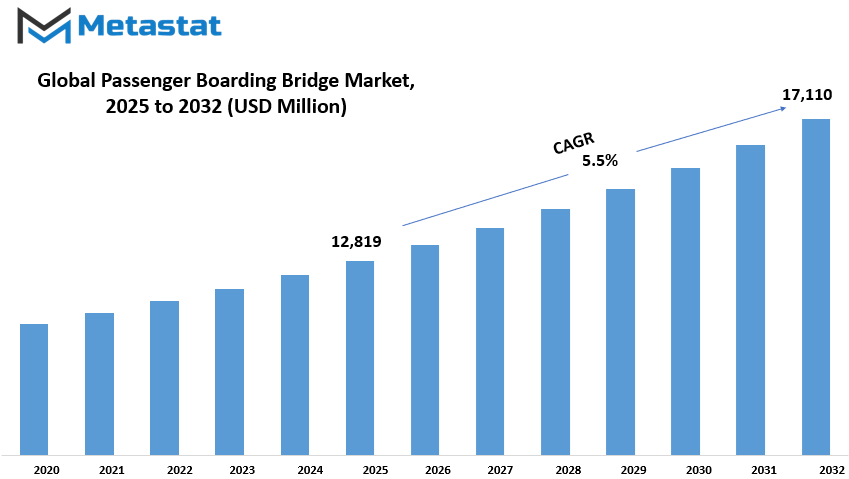
GROWTH FACTORS
The global passenger boarding bridge market is witnessing steady growth as demand for air travel and airport expansion increases across the world. With increasing numbers of people choosing air travel for business and recreational purposes, airports are forced to increase their capacity and improve their services. This added passenger capacity provides a higher demand for more streamlined boarding facilities, thus PBBs become an important part of modern airport infrastructure. PBBs streamline the boarding and exiting of airplanes, especially at times of heavy or adverse weather.
The market trend has also been aided by technology. Ergonomic and automated PBB systems are being introduced to improve day-to-day operations. Such advanced systems reduce planes' turnaround times, allow for increased control and positioning, and help improve passenger comfort. As airports focus on efficiency and improved service, the demand for such systems continues to rise. This trend is inspiring manufacturers to redesign and develop solutions that are equal to changing needs of the aviation industry.
The market has some issues, however. One of the major concerns is the astronomical installation and maintenance price tag. Building and maintaining such bridges entails heavy expenditure, which may turn out to be expensive, especially for small airports or in developing nations. Furthermore, the majority of currently existing airports lack adequate space and aging infrastructure, and therefore it becomes difficult to accommodate new or bigger boarding bridges. These constraints can hinder the growth or replacement of PBB systems, affecting total market growth.
There is still a rosy future for the market, even with these constraints. There is a growing focus on improving passenger experience through simplified boarding and deboarding and improved security. This focus is urging companies to develop more customer-friendly and secure PBB systems. Technologies that make bridges more convenient, faster to use, and easier to maintain may give airports the confidence to invest in upgrades. With security and convenience at top priority, these new designs will attract significant interest and drive the next level of market growth.
In future years, the global passenger boarding bridge market will be motivated by both the ongoing expansion of air traffic and the need for more efficient airport infrastructure. While cost and space considerations will remain, the need for improved passenger service and technology upgrade will provide new grounds for expansion and innovation in this large industry.
MARKET SEGMENTATION
Model Type
The global passenger boarding bridge market model type is also segmented into Telescopic Bridges, Apron Drive Bridge, Dual Boarding Bridge System, Commuter Bridge, Over-the-wing Bridge, Nose-loader Bridge, and T-Bridges. Every model has a specific application based on airport configuration and the size of the aircraft. Telescopic Bridges are also widely utilized since they are easy to extend as well as retract, thus they accommodate different planes. Apron Drive Bridges are also prevalent since they are adaptable in movement and positioning. Dual Boarding Bridge System facilitates boarding from two diverse points, and it speeds up the process.
Commuter Bridges are appropriate for smaller regional planes, while Over-the-wing Bridges help in airports with limited space. Nose-loader Bridges are mounted on the aircraft from the front, and T-Bridges are typically used in terminals with unique structural demands. With growing air traffic, airports are investing more in infrastructure, such as the refurbishment or installation of new boarding bridges. Older equipment is being upgraded by most airports with newer versions that offer enhanced safety features, energy efficiency, and automation.
Technology is increasingly making an impact in the market with smart bridges having sensors, cameras, and complex controls to match perfectly with the aircraft. These innovations also enhance with respect to reducing human error and delays. Apart from the technological advancements, the world is also demanding the use of eco-friendly materials and designs with low carbon footprints.
Others are now designing bridges that use less power and require less maintenance. These actions not only save money but also serve long-term sustainability goals. With strong growth in air traffic and mounting demands from air passengers, the market for passenger boarding bridges will likely continue to rise steadily during the next several years, with most of its momentum coming from airport modernization and technological changes.
By Structure
The global passenger boarding bridge market is developing continuously with an increase in air transport. Passenger boarding bridges, that could most frequently be observed joining the airport terminal building to the airplane itself, are important for guaranteeing safety and convenience in boarding and disembarkation. Passenger boarding bridges are found in airports across the globe and come in diverse structural types with diverse features and benefits. By default, the market is divided into Steel-walled Boarding Bridge, Glass-walled Boarding Bridge, and Glass-steel-walled Boarding Bridge.
Steel-walled boarding bridges are robust and durable. They are weather resistant and find wide application in most airports because of their durability and resistance to heavy use. They are mostly employed where low maintenance and strength are required. On the other hand, glass-walled boarding bridges are intended to give a good view for the passengers. Since they have transparent panels, sun can filter through and give the travelers an undisturbed and pleasant view as they move. Airports seeking to improve passenger comfort and aesthetics favor such bridges. The third option, glass-steel-walled boarding bridges, is a combination of steel and glass benefits.
They provide a stiff structure with steel support and the bonus of glass panels for admitting light and a contemporary appearance. They strike a balance between form and strength, hence being ideal for airports that require functionality as well as beauty. All forms of structures suit different airport requirements, and selection is based on various factors such as weather conditions, passengers flow, and architectural designs.
As airports focus on improving the passenger experience as well as security, the demand for efficient and well-designed boarding bridges is on the rise. Increase in air traffic, especially in developing countries, also adds to the requirement of new airport facilities.
Airports and airlines are also spending money on intelligent systems that not only make it easy to board but also become the airport's fitting image. Moreover, most airports are upgrading their old bridges with newer ones with less energy consumption and easier maintenance. This is a trend that will continue as airports aim to meet international standards and support additional passengers. The structural variety of passenger boarding bridges allows the flexibility of tailor-made solutions to meet the individual needs of each airport.
By Tunnel Type
The global passenger boarding bridge market is experiencing steady growth, and among the most important segments propelling the market is by tunnel type. The market then divides into air-conditioned tunnels and non-air-conditioned tunnels. Both are part of integral elements of the bridge structures employed in connecting airport terminals to airplanes in a manner in which passengers board and disembark safely and comfortably. More flying and expanding airports mean there is a greater demand for enhanced passenger experience. Here is where the type of tunnel in the bridge becomes important.
Conversely, non-air-conditioned tunnels are frequently selected on the basis of cost. These types of tunnels are typically less complicated in design and cheaper to install and maintain. Though they are not as comfortable, they are still fulfilling the primary function of having a secure link between the terminal and aircraft. Certain airports, particularly those in areas with less harsh climates, do not feel the necessity to install air conditioning and are primarily concerned with functionality. Under those circumstances, non-air-conditioned tunnels represent a sensible and economical option.
A decision between air-conditioned and non-air-conditioned tunnels is frequently reliant upon airport location, volume of passengers, climate, and cost. As customer service and passenger comfort gather increasing attention, a trend has been developing favoring air-conditioned tunnels in new airport developments. Nevertheless, cost remains a factor that compels some operators to opt for non-air-conditioned alternatives.
Both varieties are used in the market and will be used in the years to come. With airport infrastructure projects on the rise all over the world, both air-conditioned and non-air-conditioned tunnels will experience higher demands in the years to come. Both have their functions and help make traveling by air easier and more convenient for all.
By Docking Type
The global passenger boarding bridge market across the globe is divided by docking type into the broad categories of the Manual Docking System and the Intelligent Docking System. Passenger Boarding Bridges, or jet bridges or air bridges, play a critical function in airport business by allowing passengers to board and disembark from aircraft directly from inside the terminal building. The linking enhances the safety and comfort of the passengers, particularly during poor weather conditions.
In the Manual Docking System case, ground crew are tasked with positioning the bridge in relation to the aircraft. It necessitates trained personnel and precise coordination in order to properly position. Though it has been utilized extensively for decades, it will take longer and could be less precise than automated solutions. It is dependent mostly on the expertise and experience of the operators, and hence human error cannot be ruled out. For small airports or airports with low budgets, however, manual systems are a viable and affordable option.
In contrast, the Intelligent Docking System employs sensors, cameras, and automated actuators to position the bridge in alignment with the plane. This technology assists in minimizing turnaround time and maximizing efficiency in congested airports. With improved accuracy and quicker reaction, it minimizes the risks of damage to the aircraft and the bridge. This system is also capable of collecting and studying data, enabling airport personnel to track performance and better respond to maintenance requirements. Most major airports are slowly adopting this system as air transportation increases and the demand for faster aircraft turnaround becomes more urgent.
The selection between manual and intelligent systems depends on several factors such as airport size, budget, traffic volume, and automation desire. Although intelligent systems provide advanced features and efficiency, manual systems remain significant in certain environments where uncomplicated solutions are ideal.
Both play a central part in enabling airport operations and improving the overall travel experience for passengers. As technology advances and the need for air transport increases, more airports might slowly be converted to intelligent systems. However, the manual docking system will definitely still have its use where needed. Comparing the two systems assists in making decisions based on what is currently needed and what will be needed in the future. global passenger boarding bridge market division based on docking type is an indication of the way airports worldwide are struggling to reconcile tradition with innovation in pursuing service and security advancements.
|
Forecast Period |
2025-2032 |
|
Market Size in 2025 |
$12,819 million |
|
Market Size by 2032 |
$17,110 Million |
|
Growth Rate from 2025 to 2032 |
5.5% |
|
Base Year |
2024 |
|
Regions Covered |
North America, Europe, Asia-Pacific, South America, Middle East & Africa |
REGIONAL ANALYSIS
The global passenger boarding bridge market is classified by region for a better representation of how each region contributes to its overall growth. Geographically, this market is divided into North America, Europe, Asia-Pacific, South America, and the Middle East & Africa. North America is further divided into the United States, Canada, and Mexico. Every one of these nations boasts its own level of airport and infrastructure development, which is a determining factor in the increasing need for passenger boarding bridges. In the United States, for instance, the ongoing upgrade of airport facilities will continue to sustain the demand for sophisticated boarding systems. Canada and Mexico are also anticipated to experience consistent progress, fueled by increasing air traffic and plans for modernization.
Europe's segment consists of the United Kingdom, Germany, France, Italy, and the Rest of Europe. The region enjoys a solid foundation of international travel and an existing system of airports. Germany and the UK are particularly busy implementing new technologies to enhance airport services. Their ongoing investment in aviation infrastructure will continue to ensure steady growth in the demand for boarding bridges. France and Italy should also contribute positively, aided by tourism and business travel.
Within the Asia-Pacific market, India, China, Japan, South Korea, and the Rest of Asia-Pacific are represented. This region is currently growing very fast in terms of air travel, driven by increasing levels of income and expanding middle classes. China and India are putting serious investment into new airport developments and expansion programs. Both South Korea and Japan also contribute in a major way with their latest technologies and streamlined airport management processes. With increased passenger traffic, these nations will continue to augment demand for quality and up-to-date boarding bridges.
The South America region includes Brazil, Argentina, and the Rest of South America. Although expansion here is slower than in Asia-Pacific or North America, initiatives to enhance airport facilities in Brazil and Argentina will generate opportunities in the next few years. The Rest of South America will experience gradual growth based on regional travel and tourism patterns.
The Middle East & Africa comprises GCC Countries, Egypt, South Africa, and Rest of Middle East & Africa. It reveals growth prospects following enormous airport expansion plans in GCC nations and greater air travel demands. Egypt and South Africa too are developing the airports, leading the market upturn in the entire region.

COMPETITIVE PLAYERS
The global passenger boarding bridge market has experienced consistent growth year after year due to the increasing number of passengers flying and constant airport infrastructure modernization activities worldwide. With airports continuing to shift their attention towards enhancing passenger comfort and security, boarding bridges have turned out to be a vital component of airport infrastructure. These bridges provide a sheltered and direct link between aircraft and the terminal, cutting out weather-related delays and enhancing overall travel. With technology, newer series are now more efficient, more flexible, and simpler to use, which has made them the popular choice for airport operators.
Passenger boarding bridges exist in diverse forms to accommodate the needs of diverse aircraft and terminal designs. Some are stationary, while some are height-adjustable, length-adjustable, or angle-adjustable, enabling them to attach to various aircraft doors. These capabilities minimize turnaround time for airlines as well as enhance scheduling and operational efficiency. Most airports are also shifting towards automated systems, less requiring manual handling, further accelerating the process and minimizing human error.
A number of companies dominate the passenger boarding bridge industry. Some of the key players are ACCESSAIR Systems Inc, Adelte Group S.L., Airport Equipment (Division of J&D McLennan), Ameribridge, Inc., Avicorp Middle East, China International Marine Containers Co. Ltd., CIMC Group Ltd., FMT Sweden AB, HÜBNER GmbH & Co. KG, John Bean Technologies (JBT) Corporation, Mitsubishi Heavy Industries Ltd., NAFFCO Aviation, PT Bukaka Teknik Utama Tbk, ShinMaywa Industries Ltd., ThyssenKrupp AG, UBS Airport Systems Co., and Vataple Machinery Co. Ltd. They emphasize innovation, post-delivery service, and tailored solutions to address increasing demands from airports across the globe.
As more nations invest in developing or modernizing their airports, demand for efficient and high-tech passenger boarding bridges is bound to grow. Environmental issues are also influencing the market, with companies now providing energy-efficient products and materials that aid sustainability efforts. The intersection of growing air traffic, requirement for efficiency, and emphasis on passenger experience will continue to drive the market forward. With intense rivalry among principal players and the necessity of repeated upgradation, such a market is likely to continue to be active and prospections in years to come.
Passenger Boarding Bridge Market Key Segments:
By Model Type
- Telescopic Bridges
- Apron Drive Bridge
- Dual Boarding Bridge System
- Commuter Bridge
- Over-the-wing Bridge
- Nose-loader Bridge
- T-Bridges
By Structure
- Steel-walled Boarding Bridge
- Glass-walled Boarding Bridge
- Glass-steel-walled Boarding Bridge
By Tunnel Type
- Air-conditioned Tunnel
- Non Air-conditioned Tunnel
By Docking Type
- Manual Docking System
- Intelligent Docking System
Key Global Passenger Boarding Bridge Industry Players
- ACCESSAIR Systems Inc
- Adelte Group S.L.
- Airport Equipment (Division of J&D McLennan)
- Ameribridge, Inc.
- Avicorp Middle East
- China International Marine Containers Co. Ltd.
- CIMC Group Ltd.
- FMT Sweden AB
- HÜBNER GmbH & Co. KG
- John Bean Technologies (JBT) Corporation
- Mitsubishi Heavy Industries Ltd.
- NAFFCO Aviation
- PT Bukaka Teknik Utama Tbk
- ShinMaywa Industries Ltd.
- ThyssenKrupp AG
- UBS Airport Systems Co.
- Vataple Machinery Co. Ltd.
WHAT REPORT PROVIDES
- Full in-depth analysis of the parent Industry
- Important changes in market and its dynamics
- Segmentation details of the market
- Former, on-going, and projected market analysis in terms of volume and value
- Assessment of niche industry developments
- Market share analysis
- Key strategies of major players
- Emerging segments and regional growth potential




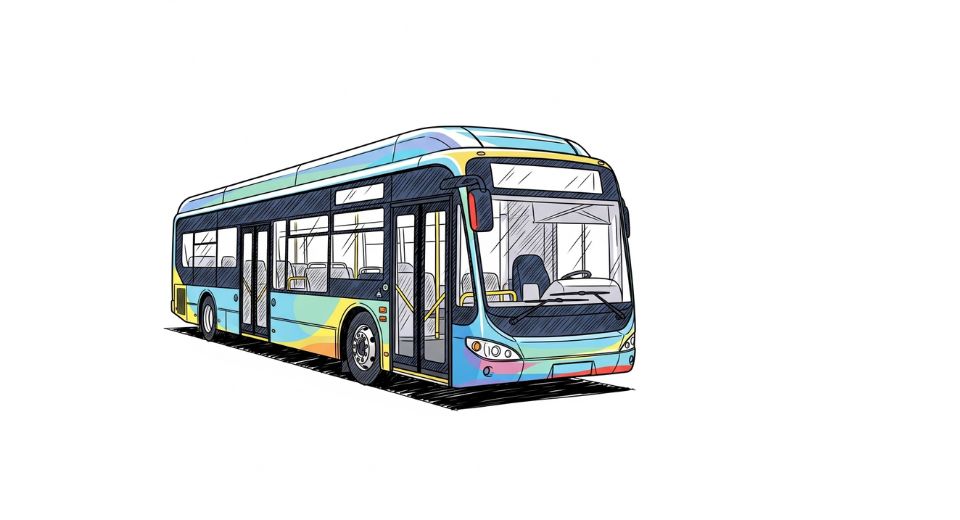
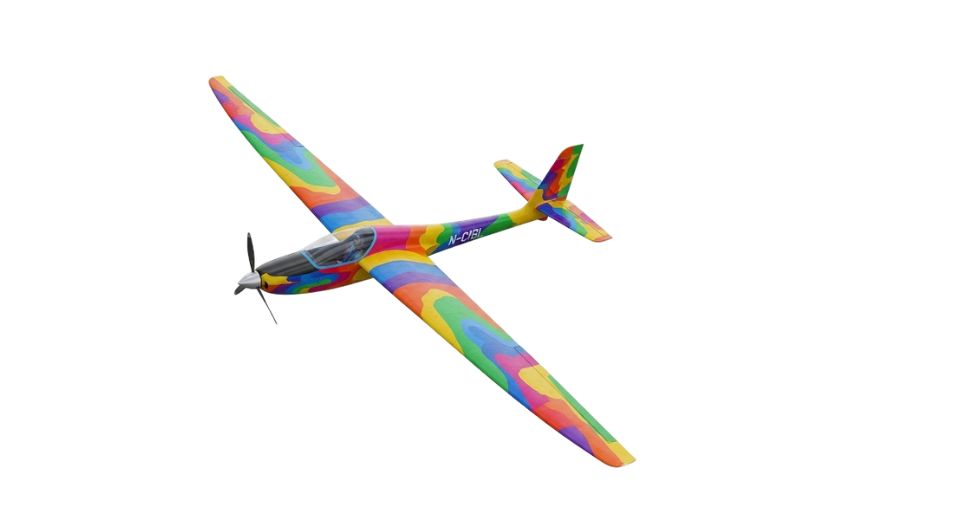
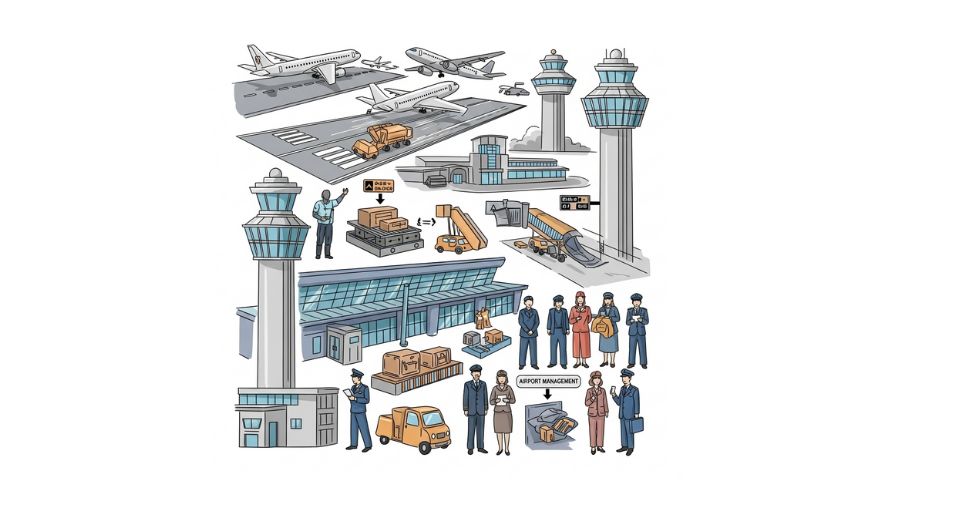


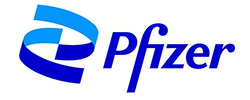

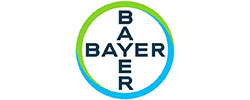


 US: +1 3023308252
US: +1 3023308252






